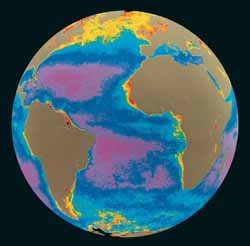Phytoplankton and ocean health
Phytoplankton blooms are responsible for about 50% of photosynthesis on Earth and therefore are important components of large biogeochemical cycles in the ocean. Viruses that infect phytoplankton are also important since they drive evolution within algal communities by manipulating the organic material (proteins, lipids, sugars, DNA and others) of the phytoplankton host for viral replication. To better understand the molecular basis of these host–virus interactions, the EU supported the project 'The role of cell signalling and infochemicals in marine algal-virus interactions' (VIRUSIGNALLING). Researchers studied the phytoplankton species Emiliania huxleyi and its specific virus, EhV86. They looked at the chemical signals involved in host–virus interactions with the aim of understanding how these signals co-evolve in both species. A major finding was that reactive oxygen species are central to the signaling process involved in regulating cell fate and viral replication cycles. In addition, viral replication depends on hijacking the host's lipid metabolism, and increased fatty acid synthesis supports viral assembly. The gene products and metabolites specific to infection identified by VIRUSIGNALLING scientists can now be used as novel biomarkers for infection in oceans. This provides researchers with advanced new tools to assess the ecology and biogeochemistry of phytoplankton host–virus interactions.







